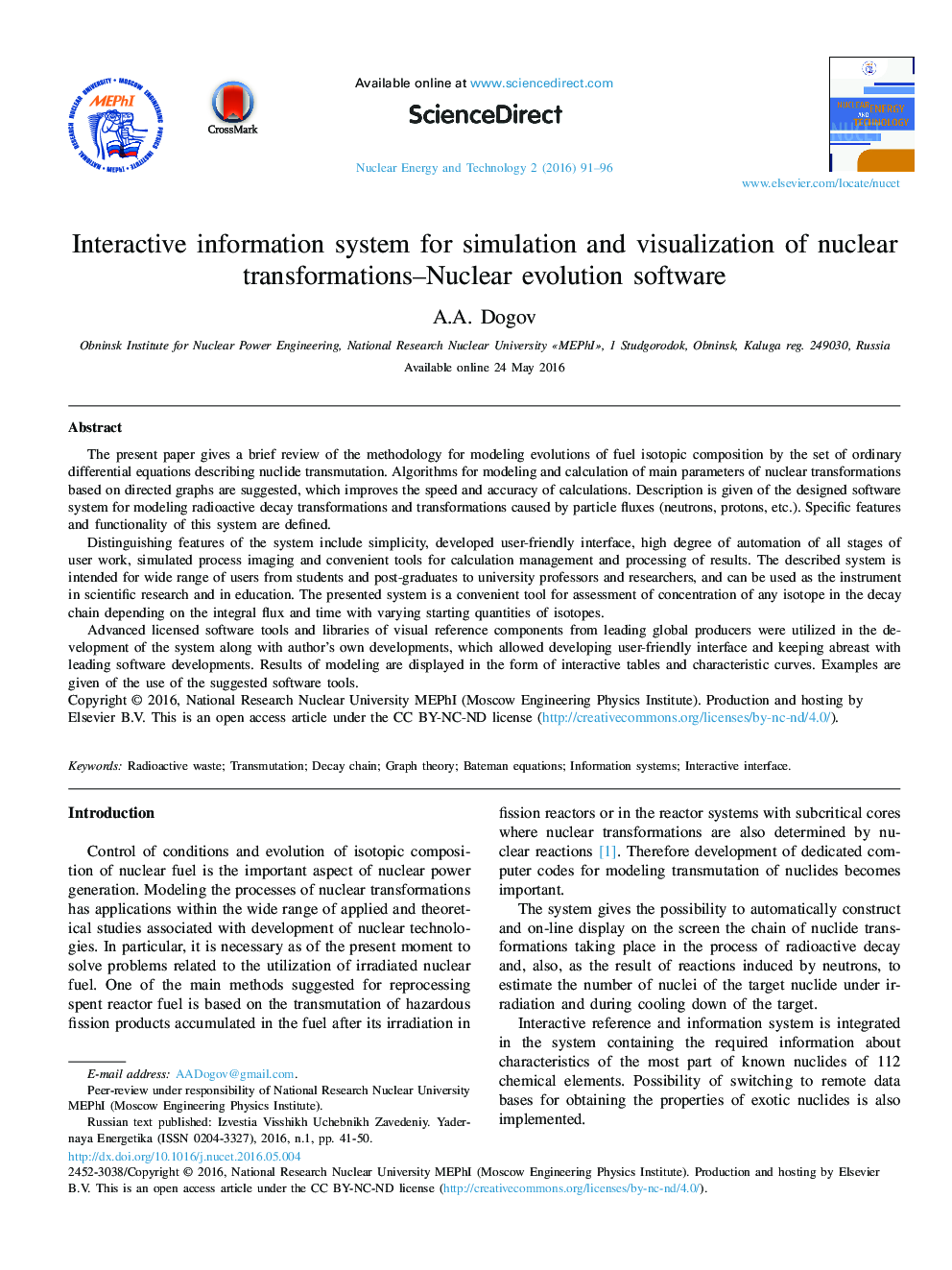| Article ID | Journal | Published Year | Pages | File Type |
|---|---|---|---|---|
| 366539 | Nuclear Energy and Technology | 2016 | 6 Pages |
The present paper gives a brief review of the methodology for modeling evolutions of fuel isotopic composition by the set of ordinary differential equations describing nuclide transmutation. Algorithms for modeling and calculation of main parameters of nuclear transformations based on directed graphs are suggested, which improves the speed and accuracy of calculations. Description is given of the designed software system for modeling radioactive decay transformations and transformations caused by particle fluxes (neutrons, protons, etc.). Specific features and functionality of this system are defined.Distinguishing features of the system include simplicity, developed user-friendly interface, high degree of automation of all stages of user work, simulated process imaging and convenient tools for calculation management and processing of results. The described system is intended for wide range of users from students and post-graduates to university professors and researchers, and can be used as the instrument in scientific research and in education. The presented system is a convenient tool for assessment of concentration of any isotope in the decay chain depending on the integral flux and time with varying starting quantities of isotopes.Advanced licensed software tools and libraries of visual reference components from leading global producers were utilized in the development of the system along with author's own developments, which allowed developing user-friendly interface and keeping abreast with leading software developments. Results of modeling are displayed in the form of interactive tables and characteristic curves. Examples are given of the use of the suggested software tools.
